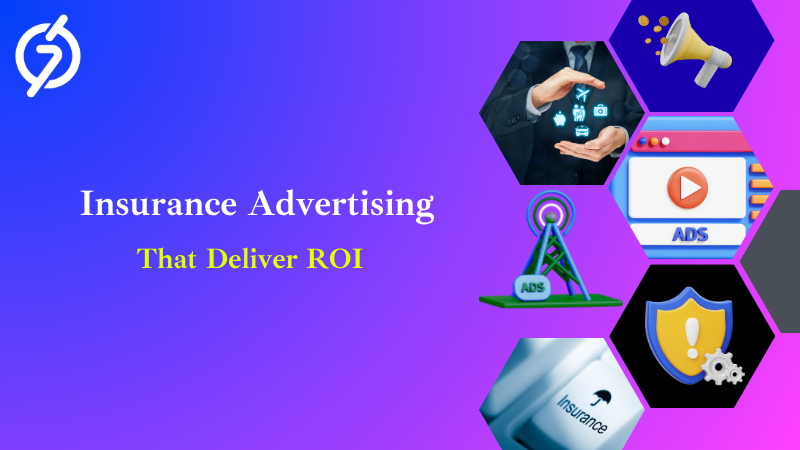In today’s competitive insurance landscape, delivering measurable returns from advertising campaigns has never been more critical. Research shows that over 70% of insurance marketers struggle to quantify the exact ROI from their campaigns, leaving budgets underutilized and strategies underperforming. This reality highlights the urgent need for insurers to embrace data-driven approaches in their advertising efforts.
Understanding the Challenge in Insurance Advertising
One of the biggest pain points for insurance advertisers is targeting the right audience at the right time. Unlike retail or consumer goods, insurance products are purchased based on life events, personal risk assessment, and financial planning. As a result, generic ads often fail to engage high-intent buyers, leading to wasted spend and low conversion rates. For example, running a mass display campaign without considering demographics or purchase intent can deliver high impressions but minimal policy sign-ups.
Advertisers often face additional challenges with complex regulatory requirements that govern how insurance can be marketed. Missteps can not only affect compliance but also damage brand reputation. In this environment, adopting proven, adaptable strategies becomes essential to maximize campaign performance.
Mini Insights for Smarter Campaigns
Insurance advertising is evolving beyond traditional channels. Digital channels such as search engines, programmatic advertising, and social media platforms offer unprecedented opportunities to reach potential policyholders with precision. The key lies in understanding the audience journey, from awareness to consideration to purchase.
One practical learning from recent campaigns is the power of high-intent targeting. Using first-party data, search behavior, and contextual signals, advertisers can reach users who are actively considering insurance products. For example, a potential client researching auto insurance quotes is far more likely to convert than someone casually browsing financial blogs. This insight alone can significantly improve ROI by ensuring marketing spend reaches qualified prospects.
Another crucial tactic is creative personalization. Insurance campaigns that tailor messaging based on user profiles—age, location, life stage, and insurance type—tend to outperform generic messaging. For instance, a family-focused auto insurance campaign highlighting multi-car discounts can resonate better with parents than a generic policy pitch.
Smarter Ad Approaches
Smarter ad approaches combine precise targeting, personalized messaging, and optimized placement across digital channels. By leveraging these tactics, advertisers can reduce wasted spend and maximize policy acquisitions. Advanced tracking, data analytics, and iterative testing further enhance campaign efficiency, allowing marketers to fine-tune campaigns in real time.
For those exploring best practices, a guide for Insurance Advertising Gives Companies the Edge provides actionable strategies that have shown measurable ROI. This resource can help advertisers understand which channels and tactics consistently deliver value in competitive insurance markets.
Key Tactics That Deliver ROI
1. Search-Driven Campaigns
Search advertising remains one of the most effective ways to target high-intent insurance buyers. By bidding on keywords that reflect immediate insurance needs, advertisers can capture users in the decision phase. Campaigns focusing on terms like “best health insurance for families” or “affordable life insurance quotes” can drive highly qualified traffic.
2. Programmatic Display Advertising
Programmatic channels allow advertisers to automate ad placement across multiple websites, targeting specific demographics and behaviors. For insurance campaigns, this means reaching users researching financial topics or comparing providers. Programmatic targeting helps deliver consistent messaging to users across multiple touchpoints, reinforcing brand awareness and increasing conversion probability.
3. Retargeting Strategies
Many users researching insurance do not convert immediately. Retargeting allows advertisers to re-engage users who visited their site or engaged with content but did not take action. By serving personalized ads highlighting benefits, discounts, or new policies, advertisers can gently guide prospects down the funnel without being intrusive.
4. Content-Driven Engagement
Providing informative content such as policy comparisons, insurance tips, and financial planning advice builds trust and positions the brand as an authority. Sponsored articles, blogs, and native placements can attract users organically while keeping engagement high. Incorporating calls to action within content further encourages conversions.
5. Social Media Targeting
Platforms like LinkedIn, Facebook, and Instagram offer sophisticated targeting tools that let advertisers segment by profession, income, age, and interests. Insurance campaigns can leverage these tools to reach relevant audiences efficiently. For example, a campaign promoting retirement insurance plans can specifically target users aged 50+ with relevant messaging.
6. Analytics and Optimization
Continuous monitoring of campaign performance is critical. Key metrics such as cost per lead, click-through rates, conversion rates, and lifetime customer value provide actionable insights. A/B testing of creatives, landing pages, and messaging ensures campaigns remain effective and adaptable to market changes.
Advertisers seeking comprehensive solutions can explore the Insurance Advertising category page, which consolidates resources, campaign ideas, and platform insights to optimize results.
The ROI Mindset
Proven insurance advertising tactics go far beyond simply reaching large audiences—they focus on connecting with the right prospects at the right time and in the most cost-effective way. A true ROI-driven approach means prioritizing precision over volume. Every dollar spent should work toward attracting qualified leads who are more likely to convert into loyal policyholders. This begins with strategic segmentation—dividing audiences by demographics, behavior, and intent—so that each campaign speaks directly to the needs and motivations of its target group.
To maximize ROI, advertisers must pair tailored messaging with carefully chosen channels, guided by real performance data rather than assumptions. Integrating tools such as automation platforms, advanced analytics, and AI-driven personalization enables marketers to continuously refine their strategies. These technologies help optimize ad spend, identify underperforming segments, and scale successful campaigns quickly.
When executed effectively, this data-driven mindset transforms ordinary marketing efforts into powerful, revenue-generating engines. High-performing insurance campaigns consistently outperform generic, one-size-fits-all approaches—delivering not just better conversion rates, but also stronger customer relationships, measurable policy acquisitions, and enhanced brand trust over time.
Call to Action
For advertisers eager to translate these insights into tangible results, the next step is straightforward yet strategic — design and launch an ad campaign that’s finely tuned to your specific insurance products and audience segments.
Start by identifying the right mix of platforms, creative assets, and messaging angles that resonate with your target market. Incorporate data-driven targeting, automation tools, and A/B testing to refine performance continuously. By leveraging best-in-class advertising technologies and proven optimization strategies, you can ensure every campaign is aligned with business objectives and positioned to maximize ROI from day one.
Final Thoughts
Insurance advertising is complex, but with the right approach, it becomes a predictable driver of business growth. By focusing on high-intent targeting, personalized messaging, programmatic reach, and continuous optimization, advertisers can consistently deliver measurable ROI.
Marketers who invest in these tactics position themselves ahead of the competition, ensuring every advertising dollar works harder and smarter. The combination of strategy, data, and creativity transforms insurance campaigns into powerful tools for acquiring loyal policyholders.
Adopting a systematic approach and relying on proven strategies ensures your campaigns not only perform but thrive in today’s competitive insurance market.


 :
: